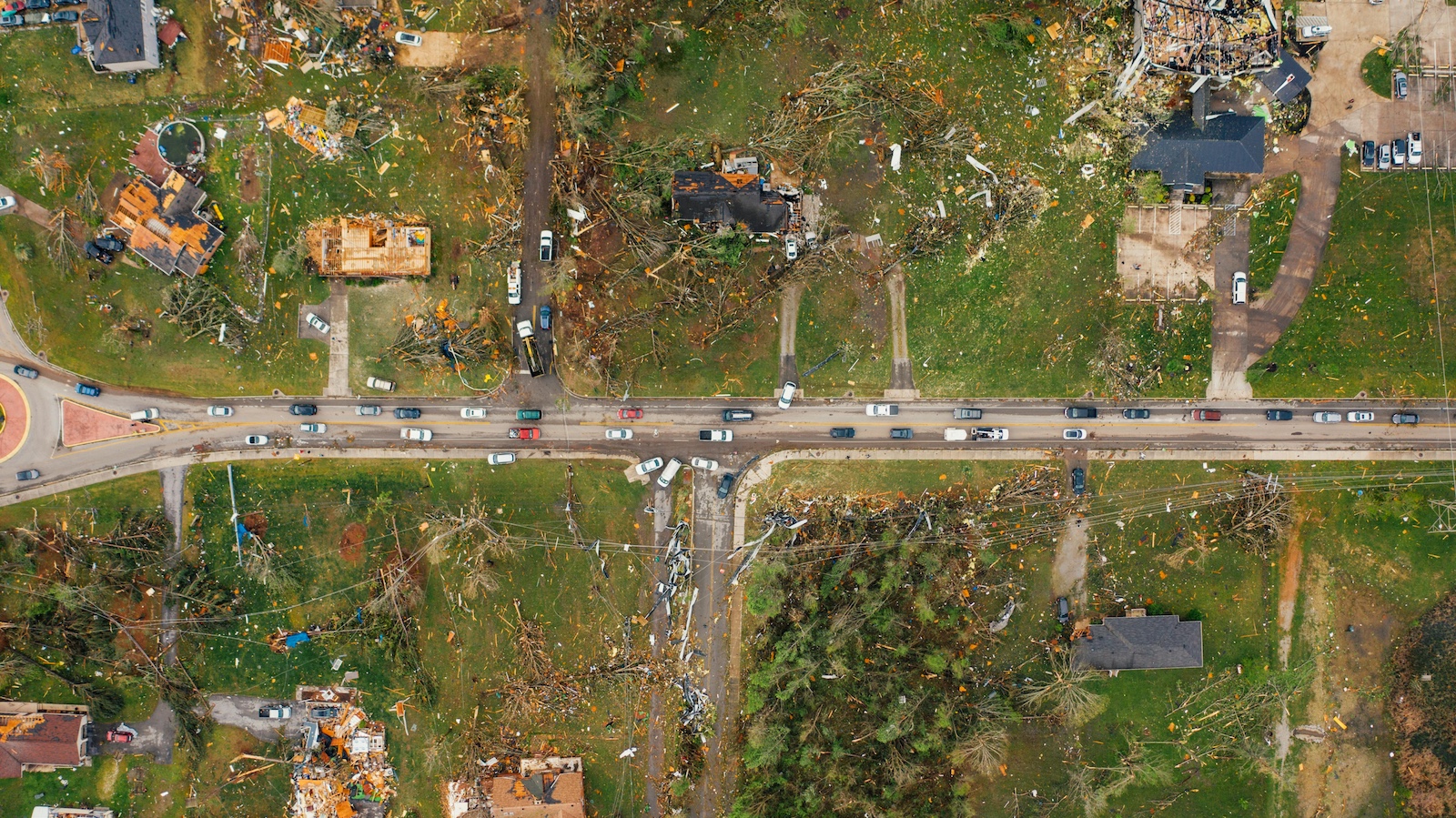Search “climate change and insurance” on the internet, and there will be no lack of information on the intersection between global warming and property insurance. It is also not hard to learn about the impact climate change is having on the D&O line of business. However, one area that is overlooked, in relation to climate change, is the product liability insurance space. That is slowly changing, and interest will most likely accelerate in the coming years.
Wrapped up in broader social policy conversations like environmental justice, social equity and social inflation, climate change risk is emerging within the product liability discipline in a pattern seen previously with mass tort litigation.
An emerging risk in the context of product liability insurance usually follows a course starting with the publication of scientific or academic reports indicating a causal link between a particular condition (i.e. climate change) and property damage or bodily injury to a third party. As these works attract attention, litigation begins to accelerate. There is a period of fits and starts, but, as more scholarly studies are conducted by reputable sources, the causation argument becomes stronger.
The history of mass torts in the U.S. demonstrates that increasing amounts of scientific evidence precede allegations of liability and an advance of litigation that can be materially damaging economically. And the industry is entering a period of affirming causal linkage between climate change and product liability.
Insurance companies’ underwriting and claims communities should be examining the trend.
Businesses and organizations have a duty of care. When they sell a product or provide a service, it is expected that it will perform as intended and not cause harm or damage. In the instances where there are aspects of the goods that could be harmful, there is a duty to warn -- hence the plethora of warning labels, disclaimers and safety pamphlets we see when we purchase a product. Climate change will enter through the doors of these corporate responsibilities affect the product liability insurance market.
In 2007, David Hunter and James Salzman, in their University of Pennsylvania Law Review article, “Negligence in the Air: The Duty of Care in Climate Change Litigation,” anticipated that more tort actions would be brought against companies for breach of their duty of care as more scientific evidence was produced demonstrating that these companies contributed to greenhouse gas emissions, which caused physical harm to others, either through the products they sold or the production methods used. The authors also predicted that other legal avenues could be pursued, such as design defect, failure to warn or public nuisance claims.
Considering “Negligence in the Air” was published in 2007, a review of more recent circumstances should elevate Hunter and Saltzman to oracle status. In 2019, Neil Beresford, an expert in complex product liability claims at Clyde & Co., wrote, “The past several years have seen a surge in climate change litigation, and these lawsuits are providing a wider body of case law and attribution science that will enable courts to draw on decisions from around the world to influence their thinking.” This author posits that a wide range of industries, such as energy, heavy manufacturing and financial institutions, will all be drawn into climate change litigation.
One location where suits might occur is California. In August, Cal/OSHA released a circular reminding employers of their obligation to protect workers from the harmful effects of wildfire smoke. While Cal/OSHA regulates employee safety, the California Office of Environmental Health Hazard Assessment (OEHHA) focuses on citizens at large and oversees enforcement of the state’s Safe Drinking Water and Toxic Enforcement Act of 1986, well known as Proposition 65. The purpose of Prop 65 is to enforce a duty to warn by requiring labeling of consumer products sold within the state that may contain chemicals that cause cancer or birth defects. While Prop 65 itself is not directly related to climate change, the OEHHA has more recently participated in studies linking higher temperatures to an “increased occurrence of death and illness, including hospital visits, emergency room visits and birth defects.” With Cal/OSHA’s concern for wildfire health hazards and many carbon-based chemicals on the Prop 65 list, it is easy to envision future developments that could bring actions against manufacturers for the harmful health effects of global warming due to the carbon-based goods they produce.
See also: A Price Tag on Climate Change
In fact, published just this year, the UN cited over 30 current cases in their “Insuring the Climate Transition” report that involve climate change litigation, falling into the following categories:
- Fossil fuel production, emissions of greenhouse gases or misleading climate altruism known as greenwashing
- Litigation related to physical harm due to climate change
- Cases related to environmental regulatory breaches
The UN selected these examples because they involve novel theories of law, because they could have material financial impact should plaintiffs prevail or because the discussion of climate change overall has been aided by the decisions the particular judges have issued.
Another possible catalyst for future product liability litigation related to climate change is with the rise of litigation funding in the U.S. If there is an increase in the amount of scientific studies linking manufactured goods to the harmful effects of climate change, there will also most likely be an increased interest in the legal financing of suits brought on this basis.
To date, the solution for the product liability underwriter has been to add exclusions to policies preventing them from responding to nascent climate- and carbon-related risks they cannot fully anticipate nor model such as MTBE, BPA or wildfire; or risks where there is a concern of dramatically, socially inflated jury verdicts. Even those insureds that purchase environmental liability policies should not assume a claim brought against a policyholder for the emission of CO2 would be covered under their policy. At present, it does not appear that there is contract-certain coverage for climate change risks in the casualty and liability arena. Existing policy forms either exclude the bodily injury or property damage risk through pollution exclusions. Even the failure-to-warn risk is usually uninsured due to limitations written within the advertising liability coverage part. On top of that, affirmative coverage has not been explicitly offered because there has not been a successful liability case based on a plaintiff’s contribution to global warming -- yet.
The smart underwriters, however, will recognize the pace at which social policy is changing rapidly and should be bold in their deployment of capital as a means of supporting change. Some actions to consider:
- Embrace the newer forms of third-party modeling platforms for emerging casualty risks that do not have historical loss patterns. Instead of avoidance of risk, underwriters can use these models to responsibly provide capacity.
- So as to offer a sustainable insurance program, upgrade the risk analysis process using insurtech tools to gather more data around insureds’ production methods and raw materials, as well as the biomedical science that may inform an underwriter about long-term risks related to those substances and their fabrication.
- Study policyholder ESG metrics and loss experience, and if correlations emerge incorporate those insights into the underwriting process as regulation allows.
- Develop coverage enhancements like reputation cover, legal expense annuities or regulatory enforcement coverage that could protect customers facing false claims of greenwashing or climate change legal liability suits.
See also: How Insurers Can Step Up on Climate Change
My favorite recommendation, however, is to be part of the climate solution by capitalizing on an underwriter’s innate inquisitiveness. Many new companies and organizations are forming to address the challenges of climate change, like developers of CO2 capture and sequestration facilities, designers of urban green roofs, inventors of sustainable water-management IoT devices and entrepreneurs offering services related to ESG scoring and reporting. With their launch, climate-related companies will need liability insurance, making them attractive new opportunities for an underwriter.
As these enterprises use untested technologies with no historical loss experience, the casualty underwriter’s enthusiasm may suffer. However, underwriters and sustainability-focused companies have a common characteristic: They similarly provide a social good through their products. Through collaboration and study, underwriters can understand the technologies these start-ups apply and provide access to the abundant risk mitigation resources insurance carriers can offer. With reasonably priced insurance coverage and capacity, businesses oriented toward solving the effects of climate change would have the protection needed to innovate and expand confidently. Insurance often looks to the past to predict the future, but it is also an industry that has the ability to facilitate a better world.








